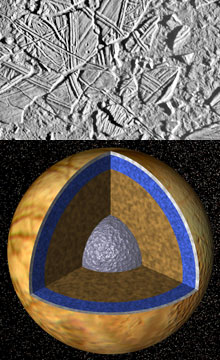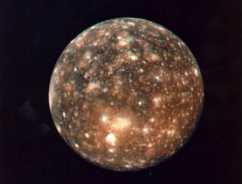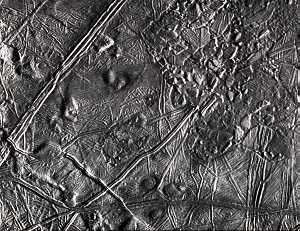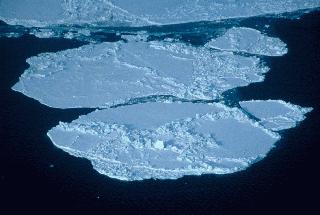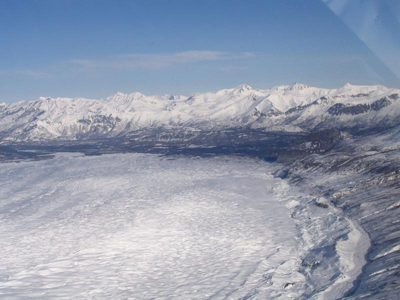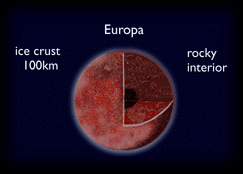Click on image for full size
Images courtesy of NASA/JPL/ASU.
The Icy Galilean Moons of Jupiter
Jupiter has four large moons which are sometimes called the "Galilean moons". Three of the four - Europa, Ganymede, and Callisto - are covered with water ice and are thus similar to Earth's frozen polar regions in various ways.
Although their interiors also contain rocky material, the outermost layers of these three moons are mainly made of water ice. Each of the three, especially Europa, might also have salty "oceans" of liquid water beneath their surface layers of ice. This is reminiscent of Earth's Arctic Ocean, where sea ice floats atop ocean water, and of the subglacial lakes in Antarctica which lay thousands of meters beneath the Antarctic ice sheet.
Astrobiologists are excited about the possibility of finding life in these putative under-ice oceans. They are especially interested in Europa. Like volcanic Io, the only non-icy Galilean moon, Europa's interior is constantly heated due to flexing caused by gravitational tugs from Jupiter and the other large moons. Europa could have geothermal features, like undersea volcanoes or hydrothermal vents, at the bottom of its proposed "ocean layer". On Earth, strange communities of extremophile microbes, enormous tubeworms, clams and crabs thrive around hydrothermal vents on the sea floor. Scientists wonder whether similar organisms could have arisen within the proposed oceans of Europa or the other icy Galilean moons.
A polar explorer from Earth might also see a familiar sight in the skies above these icy moons. The beautiful light shows of the aurora, or Southern and Northern Lights, are often visible above Earth's polar regions. Aurora have been detected at Ganymede, and may occur at Europa and Callisto as well.


